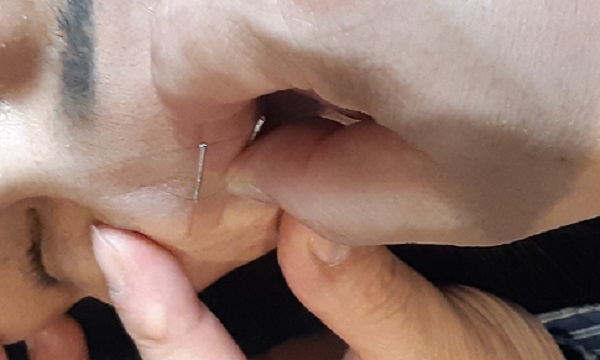
Bell’s palsy is a form of facial paralysis resulting from damage or trauma to the facial nerves. It is a type of temporary facial paralysis or weakness, typically on one side of the face, that is usually caused by inflammation of the facial nerve. Symptoms can include muscle weakness on one side of the face, drooping of the eyelid and corner of the mouth, and difficulty making facial expressions. Treatment often includes corticosteroids and antiviral medications. Bell Palsy can be treated by Acupuncture.
There are several acupoints that are commonly used in the treatment of Bell’s palsy, including:
- GB14 (Yuan-ling): This point is located on the head, near the base of the skull, and is believed to help relieve pain and improve facial function.
- ST7 (Xi-guan): This point is located on the face, near the corner of the mouth, and is thought to help with facial paralysis.
- LI4 (He-gu): This point is located on the hand, in the webbing between the thumb and index finger, and is believed to help with facial muscle weakness and pain.
- ST6 (Ji-quan): This point is located on the face, near the corner of the eye, and is thought to help with facial muscle weakness and drooping.
- GB20 (Feng-chi): This point is located on the neck, near the base of the skull, and is believed to help with headaches, neck stiffness, and facial muscle weakness.
- LI20 (Yingxiang): This point is located on the face, near the nose, and is thought to help with facial muscle weakness and drooping.
It’s important to note that the choice and combination of acupoints used in treatment will depend on the individual case and the practitioner’s approach. The practitioner will develop a treatment plan tailored to your specific needs after a thorough examination and diagnosis.

